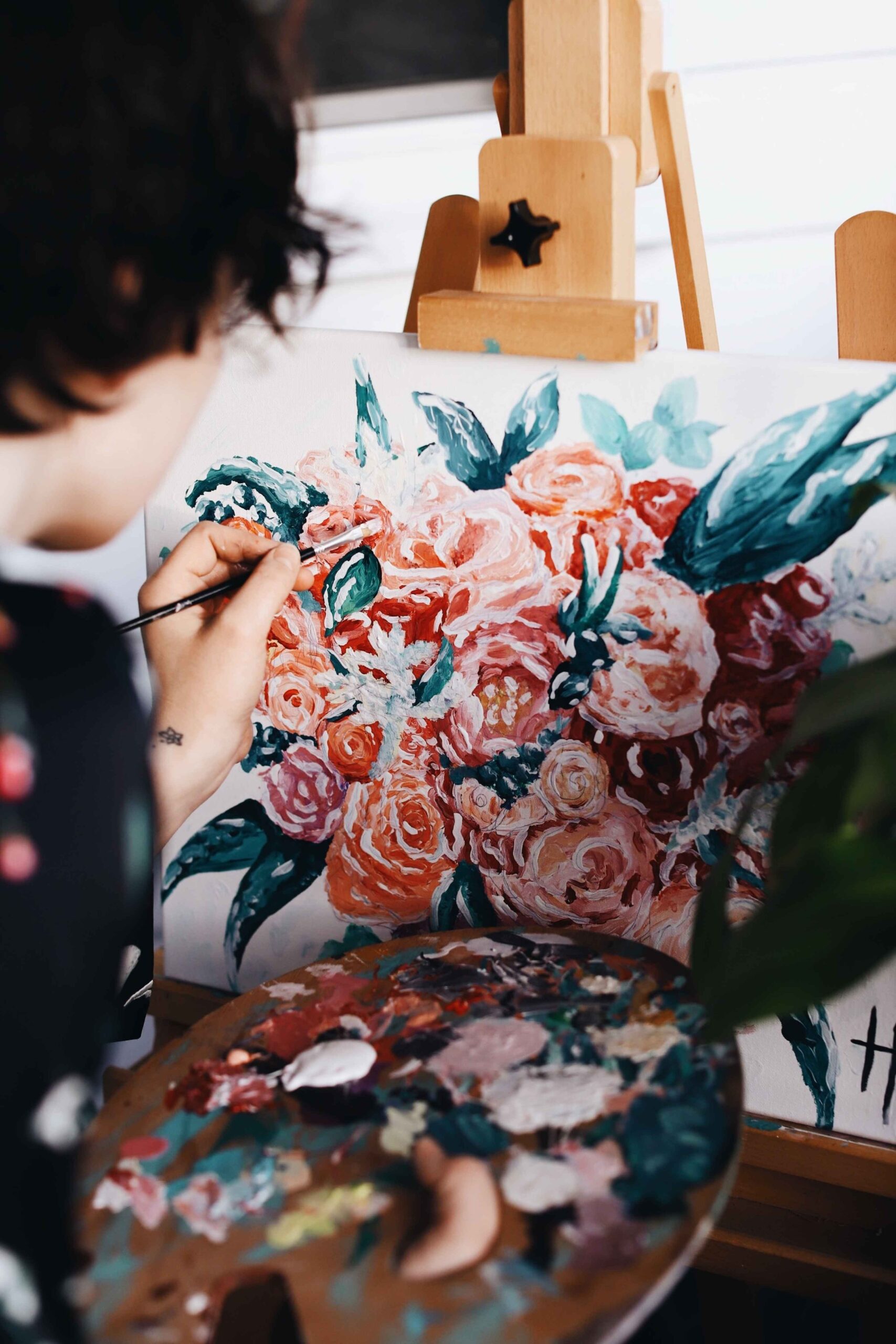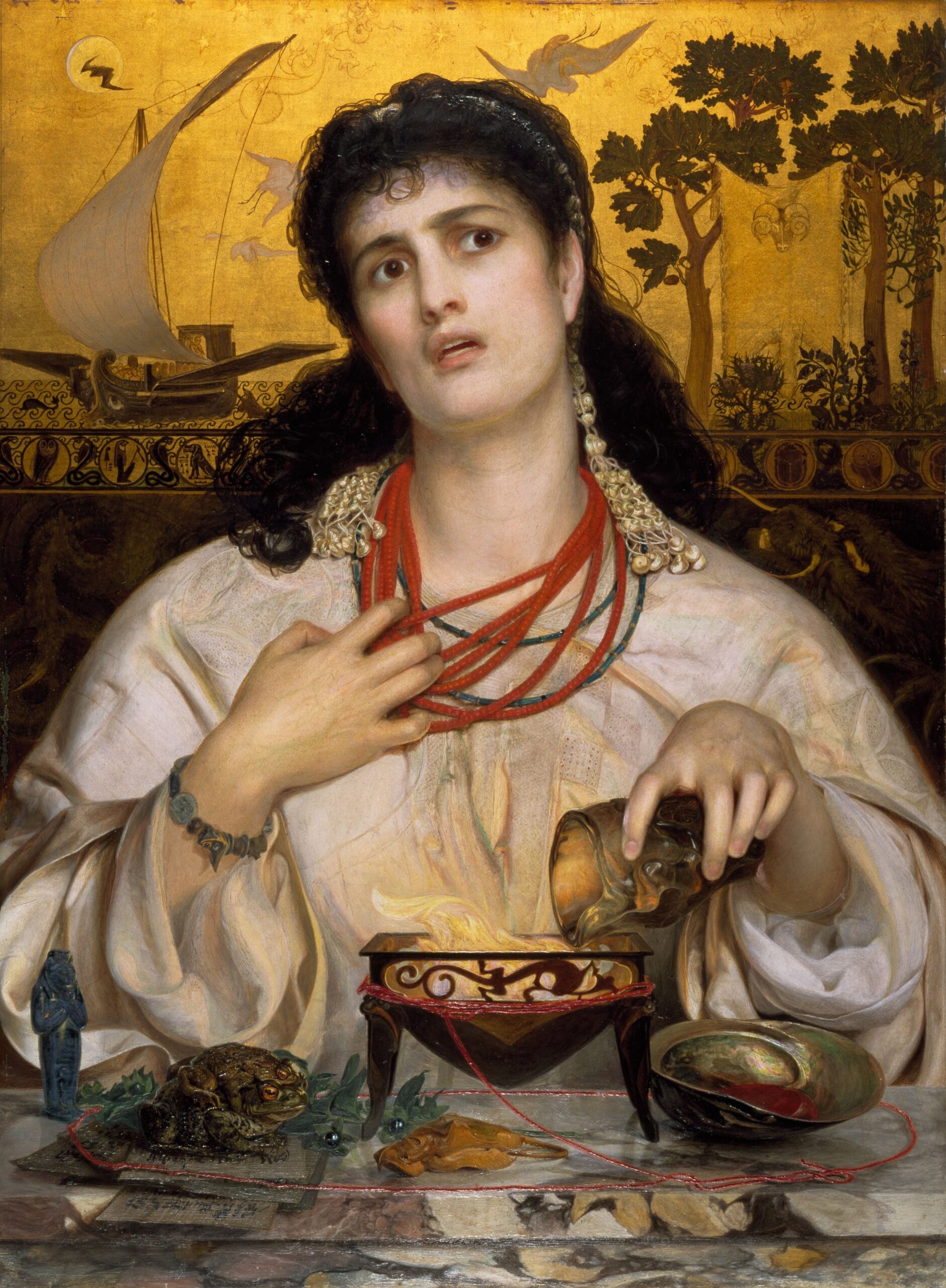Are you an aspiring artist looking to explore different painting mediums? If so, you may have come across the age-old dilemma of deciding between oil paint and acrylic paint. Understanding the differences between these two popular mediums is essential in determining which one suits your style and preferences. In this article, we will delve into the contrasting qualities of oil paint and acrylic paint, shedding light on their composition, drying time, versatility, and overall aesthetic effects. So, whether you’re a beginner or an experienced artist, let’s take a closer look at the distinctive characteristics of oil paint and acrylic paint that make them unique in their own right.
Composition and Drying Time
Ingredients in Oil Paint
Oil paint is primarily composed of pigments suspended in a drying oil, such as linseed oil or walnut oil. These oils act as a binder, holding the pigments together and adhering them to the painting surface. Additionally, there may be additives included in oil paint to adjust its consistency and drying time.
Ingredients in Acrylic Paint
Acrylic paint, on the other hand, is made up of pigments that are suspended in an acrylic polymer emulsion. This emulsion acts as a binder, similar to the oil in oil paint, but it dries through evaporation rather than oxidation. Additives are also included in acrylic paint to control its consistency and drying time.
Drying Time of Oil Paint
One of the key differences between oil paint and acrylic paint is the drying time. Oil paint dries through a process called oxidation, which can take several days or even weeks to complete fully. This slow drying time allows for greater versatility in terms of blending and layering colors, as well as making changes to the painting as it progresses.
Drying Time of Acrylic Paint
Acrylic paint, on the other hand, dries much more quickly. It typically dries to the touch within a few minutes to an hour, depending on factors such as the thickness of the paint and the ambient temperature. This fast drying time can be advantageous for artists who prefer to work in a more rapid and spontaneous manner, as it allows for quicker completion of a painting.
Consistency and Texture
Consistency of Oil Paint
Oil paint has a naturally buttery and thick consistency due to the presence of oils. However, artists can manipulate the consistency of oil paint by adding mediums or solvents to thin it down or make it more fluid. This versatility allows for a wide range of brushwork and techniques, from thick impasto strokes to smooth glazes.
Consistency of Acrylic Paint
Acrylic paint, on the other hand, has a more fluid consistency straight from the tube. It is water-based, which makes it easy to thin down or thicken with water or mediums. This versatility allows artists to achieve a variety of textures and effects, from thin washes to thick impasto layers.
Texture of Oil Paint
Oil paint often creates a rich and textured surface due to its slow drying time. Artists can build up layers of paint and use various tools and techniques to create texture, such as palette knives or bristle brushes. The ability to work with wet paint for extended periods also allows for blending and smudging, resulting in smooth transitions on the canvas.
Texture of Acrylic Paint
Acrylic paint can also be used to create texture, but its fast drying time can sometimes make it challenging to achieve certain effects. However, artists can still utilize techniques such as dry brushing or sgraffito to add texture. The quick drying time can even be an advantage for those seeking to create crisp and precise details.

Mixing and Blending
Mixing Colors in Oil Paint
Oil paint lends itself well to color mixing and blending due to its slow drying time. Artists can easily blend colors directly on the canvas using a variety of techniques, such as wet-on-wet blending or glazing. This allows for a wide range of color possibilities and the ability to achieve smooth transitions between hues.
Mixing Colors in Acrylic Paint
Acrylic paint also allows for color mixing and blending, but the fast drying time requires artists to work more quickly. Wet-on-wet blending can be achieved by using acrylic glazing techniques or by working in smaller sections at a time. The ability to layer acrylic paint allows for the build-up of rich and complex colors.
Blending Techniques in Oil Paint
In oil painting, blending techniques can be achieved through various methods, such as using brushes, palette knives, or even fingers. By working with wet paint, artists can seamlessly blend colors together, creating smooth gradients and soft transitions. This versatility enables artists to achieve a wide range of painterly effects.
Blending Techniques in Acrylic Paint
While acrylic paint has a faster drying time, artists can still achieve blending effects by using techniques such as feathering, scumbling, or dry brushing. These techniques require the artist to work more quickly and purposefully, but they can still result in beautiful blended effects on the canvas.
Color Intensity and Opacity
Color Intensity in Oil Paint
Oil paint is known for its rich and vibrant colors. The pigments used in oil paint are often highly concentrated, leading to intense hues on the canvas. Additionally, oil paint tends to have a translucent quality, allowing light to reflect off the underlying layers of paint. This luminosity adds depth and richness to the colors.
Color Intensity in Acrylic Paint
Acrylic paint can also have excellent color intensity, but the pigments used may not be as highly concentrated as those in oil paint. However, acrylic paint has the advantage of drying to a consistent color. Once dry, the colors remain vibrant and do not undergo significant changes in hue. This color stability makes acrylic paint ideal for artists who desire predictability in their work.
Opacity in Oil Paint
Oil paint can range in opacity, depending on the pigments used. Some pigments are naturally more opaque, while others are more transparent. This variability allows artists to create layered effects, with translucent glazes revealing the colors underneath. The ability to subtly adjust the opacity of oil paint adds depth and complexity to the final artwork.
Opacity in Acrylic Paint
Acrylic paint can also vary in opacity, depending on the specific pigments used. Artists can choose from a wide range of opaque, transparent, or translucent acrylic paints to achieve their desired effects. Acrylic paint’s quick-drying nature allows artists to layer colors and create complex compositions with different levels of opacity.

Drying and Curing
Drying Process of Oil Paint
As mentioned earlier, oil paint dries through a process called oxidation. The slow evaporation of the solvents in the paint allows the oil to harden and form a film over time. It usually takes several days to weeks for oil paint to dry to the touch, and it can continue to cure and harden over months or even years. This slow drying and curing process ensures the longevity and durability of oil paintings.
Curing Process of Acrylic Paint
Acrylic paint, in contrast, dries by evaporation of the water content in the emulsion. While acrylic paint may feel dry to the touch within minutes to hours, it takes longer for the paint to fully cure and harden. Generally, acrylic paintings can be considered fully cured within a few weeks. Once cured, acrylic paint forms a durable and flexible film.
Surface and Substrate Compatibility
Compatibility of Oil Paint with Surfaces and Substrates
Oil paint is highly compatible with a wide range of surfaces and substrates. It can be applied to traditional supports like canvas, wood, or panel, as well as unconventional surfaces like metal or glass. The slow drying time of oil paint allows for the paint to adhere well and create a strong bond with the chosen surface.
Compatibility of Acrylic Paint with Surfaces and Substrates
Similarly, acrylic paint is also compatible with a variety of surfaces and substrates. It can be used on canvas, paper, wood, metal, plastic, and more. Acrylic paint’s ability to adhere well to different surfaces makes it a versatile choice for artists. However, it’s worth noting that some surfaces may require preparation, such as priming or sealing, to ensure proper adhesion and longevity of the artwork.

Tools and Techniques
Tools Used for Oil Painting
Oil painting traditionally involves the use of brushes, palette knives, and other tools for applying and manipulating the paint on the canvas. Artists may also use rags, sponges, or even their fingers to create specific effects or textures. The slow drying time of oil paint allows for more intricate and detailed brushwork.
Techniques Used in Oil Painting
Oil painting offers a wide range of techniques for artists to explore. Some common techniques include glazing, impasto, scumbling, and alla prima. Each technique requires different application methods, such as layering thin translucent glazes or building up thick impasto strokes. The versatility of oil paint allows artists to experiment and find their preferred style and technique.
Tools Used for Acrylic Painting
Acrylic painting utilizes similar tools to oil painting, such as brushes, palette knives, and sponges. However, due to the quick-drying nature of acrylic paint, artists may also use spray bottles or mister bottles to keep the paint moist for longer periods. Airbrushes are also popular tools for achieving smooth and even application of acrylic paint.
Techniques Used in Acrylic Painting
Acrylic painting techniques are similar to those used in oil painting, but they often require quicker execution. Artists can explore techniques such as glazing, blending, dry brushing, and pouring, among others. The versatility of acrylic paint allows for experimentation with different styles and techniques, from realistic renderings to abstract creations.
Versatility and Applications
Versatility of Oil Paint
Oil paint’s slow drying time and its ability to be easily manipulated make it highly versatile. It can be used for a wide range of applications, including but not limited to landscapes, portraits, still life, and abstract art. Oil paint allows artists to build up layers, create texture, and achieve a wide range of colors. Its versatility has made it a popular choice among artists for centuries.
Versatility of Acrylic Paint
Acrylic paint’s fast drying time and flexible nature also make it a versatile medium. It can be used for various applications, such as landscapes, portraits, abstract art, and mixed media. Acrylic paint can be thinned down to mimic watercolor or applied thickly for impasto effects. The ability to experiment with different techniques and styles makes acrylic paint a favorite among artists of all levels.
Applications of Oil Paint
Oil paint has a long history of use in traditional art forms, such as Renaissance masterpieces and realistic portraiture. Its slow drying time allows artists to work over extended periods, building up layers and achieving precise details. Oil paint also has a luxurious and timeless quality, making it a popular choice for creating classic and realistic artworks.
Applications of Acrylic Paint
Acrylic paint has gained immense popularity in contemporary art due to its versatility and fast drying time. It is commonly used for a wide range of applications, including vibrant abstract paintings, mixed media collages, and modern illustrations. Acrylic paint’s ability to mimic other mediums, such as watercolor or oil, further expands its applications and allows artists to explore various artistic styles.

Longevity and Aging
Longevity of Oil Paintings
Oil paintings are known for their longevity and ability to withstand the test of time. The slow drying and curing process of oil paint creates a durable and flexible film on the canvas. With proper care and conservation, oil paintings can last for centuries. The aging of oil paintings can result in a subtle yellowing, known as “oil paint’s ambering effect,” which is often considered part of the natural beauty and charm of these artworks.
Longevity of Acrylic Paintings
Acrylic paintings also have good longevity when properly handled and cared for. Acrylic paint forms a durable and flexible film once it is fully cured. However, acrylic paint can be more susceptible to damage from UV light and environmental factors compared to oil paint. It is essential to protect acrylic paintings from direct sunlight and fluctuations in humidity to ensure their longevity.
Aging Characteristics of Oil Paint
Oil paint has distinct aging characteristics that can add depth and character to a painting over time. As oil paint cures and ages, it can undergo subtle changes in color and surface texture. The film may become more transparent, allowing the viewer to see different layers and brushwork underneath. The aging process of oil paintings contributes to their unique aesthetic and historical significance.
Aging Characteristics of Acrylic Paint
Acrylic paint may undergo minimal changes in its appearance as it ages. If properly protected from UV light and environmental factors, acrylic paintings can maintain their original vibrancy and color integrity. Unlike oil paint, acrylic paint tends to retain its original appearance without significant changes in transparency or texture over time. These characteristics make acrylic paintings ideal for those seeking long-term color stability.
Cleanup and Health Considerations
Cleanup of Oil Paint
Cleaning up after oil painting requires the use of solvents, such as mineral spirits or turpentine, to remove paint from brushes and palettes. It is important to handle and dispose of these solvents safely, following all recommended guidelines. Artists should also ensure proper ventilation when working with oil paint, as the fumes from solvents can be harmful if inhaled.
Cleanup of Acrylic Paint
Cleaning up after acrylic painting is relatively easier compared to oil painting. Brushes and palettes can be cleaned with water, and dried acrylic paint can be removed with the help of acrylic painting mediums or soap and water. Acrylic paint is also generally considered non-toxic when used as intended. However, it is still recommended to work in a well-ventilated area and take precautions when handling large quantities of acrylic paint.
Health Considerations with Oil Paint
When working with oil paint, it is important to be mindful of potential health hazards. The solvents used in oil painting, such as turpentine or mineral spirits, can release fumes that may be harmful if inhaled in large quantities. It is advisable to work in a well-ventilated area or use a respirator if necessary. Additionally, some pigments used in oil paint may have specific health risks, so it is essential to research and handle them with caution.
Health Considerations with Acrylic Paint
Acrylic paint is generally considered to be safer to work with compared to oil paint. The water-based nature of acrylic paint reduces the need for toxic solvents, making it a more environmentally friendly option. However, it is still important to practice good safety measures, such as working in a well-ventilated area and avoiding ingestion or excessive contact with skin. Some individuals may have specific sensitivities or allergies to certain pigments, so it is recommended to take necessary precautions and seek medical advice if needed.
In conclusion, while both oil paint and acrylic paint offer unique qualities, they differ in terms of drying time, consistency, texture, color intensity, longevity, and health considerations. Oil paint has a slow drying time, more versatile consistency, and the ability to achieve rich and luminous colors. On the other hand, acrylic paint dries quickly, has a more fluid consistency, and is known for its color stability. Both mediums have their own set of tools and techniques, allowing artists to create a wide range of artwork. Understanding the characteristics and applications of oil paint and acrylic paint can help artists choose the most suitable medium for their desired artistic vision.




